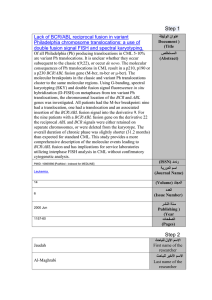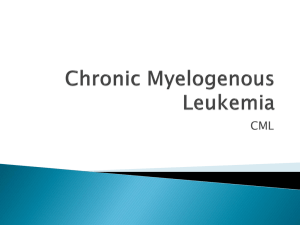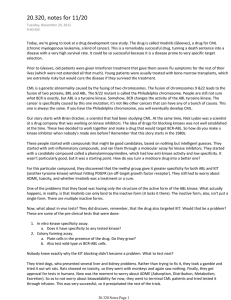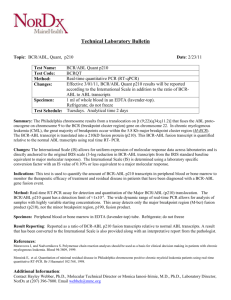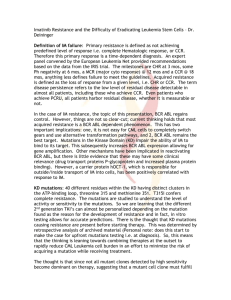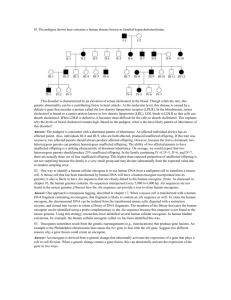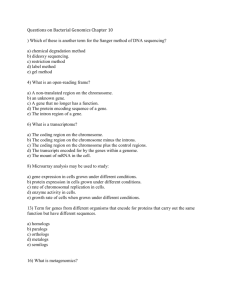Hematology Case Study 9 - Cal State LA
advertisement
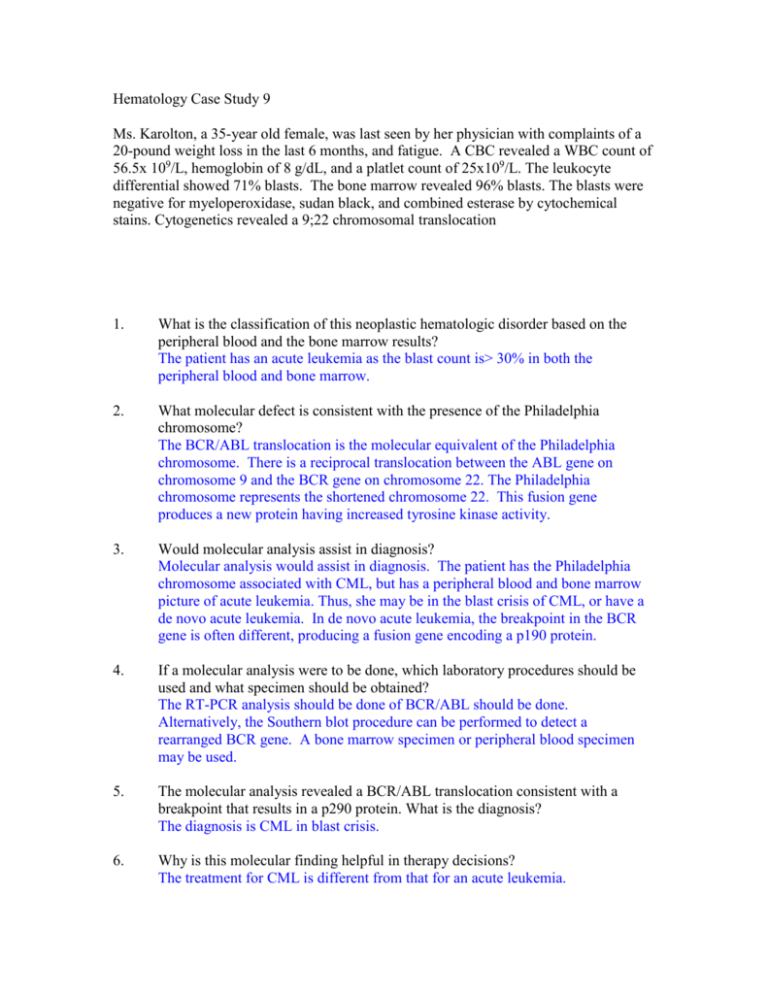
Hematology Case Study 9 Ms. Karolton, a 35-year old female, was last seen by her physician with complaints of a 20-pound weight loss in the last 6 months, and fatigue. A CBC revealed a WBC count of 56.5x 109/L, hemoglobin of 8 g/dL, and a platlet count of 25x109/L. The leukocyte differential showed 71% blasts. The bone marrow revealed 96% blasts. The blasts were negative for myeloperoxidase, sudan black, and combined esterase by cytochemical stains. Cytogenetics revealed a 9;22 chromosomal translocation 1. What is the classification of this neoplastic hematologic disorder based on the peripheral blood and the bone marrow results? The patient has an acute leukemia as the blast count is> 30% in both the peripheral blood and bone marrow. 2. What molecular defect is consistent with the presence of the Philadelphia chromosome? The BCR/ABL translocation is the molecular equivalent of the Philadelphia chromosome. There is a reciprocal translocation between the ABL gene on chromosome 9 and the BCR gene on chromosome 22. The Philadelphia chromosome represents the shortened chromosome 22. This fusion gene produces a new protein having increased tyrosine kinase activity. 3. Would molecular analysis assist in diagnosis? Molecular analysis would assist in diagnosis. The patient has the Philadelphia chromosome associated with CML, but has a peripheral blood and bone marrow picture of acute leukemia. Thus, she may be in the blast crisis of CML, or have a de novo acute leukemia. In de novo acute leukemia, the breakpoint in the BCR gene is often different, producing a fusion gene encoding a p190 protein. 4. If a molecular analysis were to be done, which laboratory procedures should be used and what specimen should be obtained? The RT-PCR analysis should be done of BCR/ABL should be done. Alternatively, the Southern blot procedure can be performed to detect a rearranged BCR gene. A bone marrow specimen or peripheral blood specimen may be used. 5. The molecular analysis revealed a BCR/ABL translocation consistent with a breakpoint that results in a p290 protein. What is the diagnosis? The diagnosis is CML in blast crisis. 6. Why is this molecular finding helpful in therapy decisions? The treatment for CML is different from that for an acute leukemia. 7. Discuss the newest recommended treatment for this condition. Gleevac is the new treatment of choice. This drug selectively inhibits the BCR/ABL kinase at submicromolar concentrations. It kills or inhibits the proliferation of all BCR/ABL expressing cell lines.


